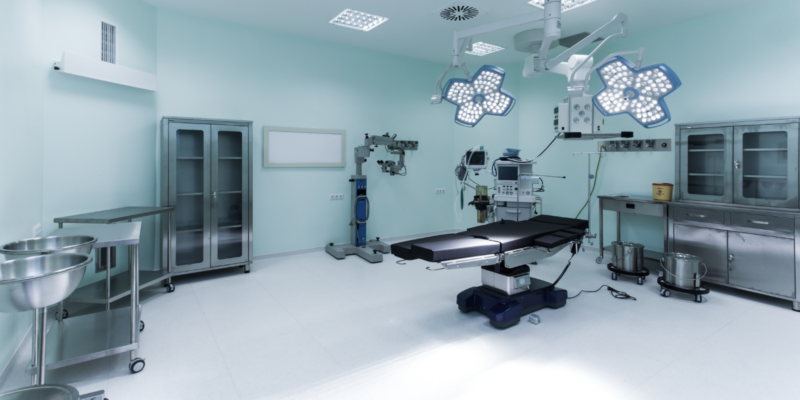Lab Design Starts Here: 770-932-1118
Planning And Constructing A Hybrid Operating Room

Let’s talk about planning and constructing a hybrid operating room.
Since 2010 the number of hybrid operating rooms has expanded greatly. This style of operating room has come a long way from the first operating “tent” created by the Romans in 65 AD and the first indoor operating room born in Europe in the Middle Ages. These ancient laboratories have laid the foundation of our hybrid operating theatre today. There are different types of operating rooms, General, Orthopedic, Neuro, Spine, Urology, and Cardiac/Thoracic requiring different equipment and room set ups. The trend in hybrid surgical suites allows the combination of a traditional operating room with an image guided intervention suite. Today’s sophisticated combination creates the flexibility to perform highly complex surgical procedures in one room.
The reason for having different types of operating rooms is that different procedures require different equipment and personnel. When planning and constructing these rooms, keep in mind the following:
-
- Space and design considerations
- Imaging equipment
- Creation of ideal workflow
- Acoustic considerations (specially if used for teaching)
- Patient safety
- Budget
Hybrid set ups are increasingly in demand as more procedures have evolved into more integrated hybrid procedures, such as aortic valve replacement or hysterectomies. These suites are also used for teaching and require substantial upgrade and attention given to the acoustics and video capabilities to be able to teach live or at later time. These operating suites are adding technology advances and laparoscopic surgeries allowing the flexibility to adjust to a traditional operating procedure should complications arise, as well it keeps patients from undergoing multiple procedures in the same visit.
The end goal in planning and constructing these integrated operating rooms is to assure greater patient safety, that also result in a quicker recovery. Surgeons and medical staff working in hybrid operating rooms benefit as their modern setting allows for more efficiency and ensures that even the most complicated patient needs are met. Decreasing risks is a priority and being in a hybrid operating room lessens the time in the OR exposed to only one surgery, leads to shorter lengths of stay, and better patient financial resource management. By streamlining the surgical process and improving patient outcomes, hybrid ORs can also decrease costs for entire care facilities.
Because hybrid ORs are so expensive to implement, it is essential that a facility have a solid plan in place for the most effective use of these rooms. This includes gathering input from various vascular, neurovascular, cardiothoracic, radiology, nursing, and other specialists to ensure proper demand and use of the new capabilities.
At LabDS we can help. Our products, such as custom lab casework or lab cabinets or seating are suitable for surgical suites. As leaders in lab design for decades, LabDS understands how to deliver consistent, dependable, and durable performance. Call us at 770-932-1118 or contact us on our website to schedule a free consultation.

